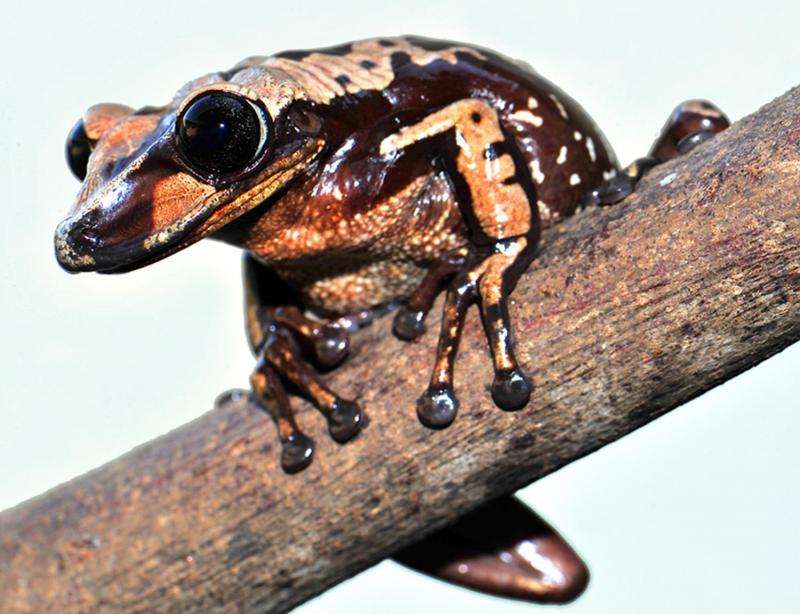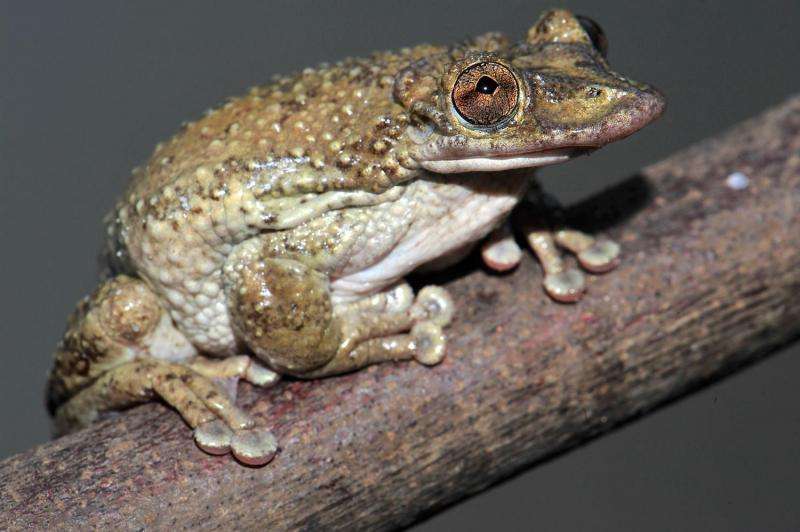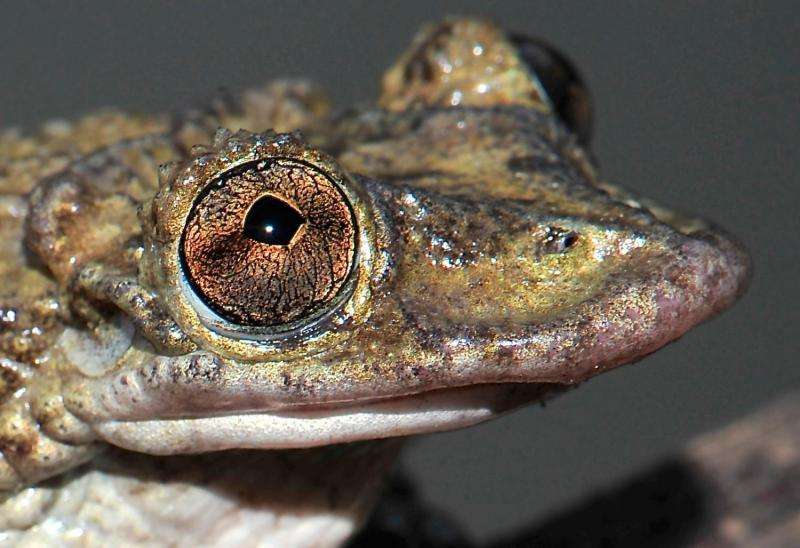The heads of these Brazilian frogs are venomous weapons

Utah State University biologist Edmund "Butch" Brodie, Jr. is among a team of scientists who've made a startling discovery about at least two species of helmeted tree frogs found in regions of Brazil: they're venomous.
But what about the well-known poison dart frog, one might ask. Poisonous is not the same as venomous, Brodie says.
"A poisonous animal has toxins that must be inhaled or ingested by another animal to cause harm," he says. "To be described as venomous, the organism must have a delivery mechanism – such as hollow fangs in vipers – to introduce its toxins into other animals."
In the case of the "hylid" or arboreal frogs Brodie is studying with colleagues from Brazil's premier biomedical research center, Instituto Butantan, and the University of São Paulo, the amphibians use sharp spines poking out of their skulls to 'head-butt' predators and inject deadly venom. The scientists report their findings, the first known description of venomous frogs, in the August 6, 2015, issue of 'Current Biology.'
In addition to Brodie, the paper's writers are lead author Carlos Jared, Pedro Mailho-Fontana, Marta Maria Antoniazzi, Vanessa Aparecida Mendes, Katia Cristina Barbaro and Miguel Trefaut Rodrigues.

"This is one of those 'once in a career' discoveries," Brodie says. "It's really strange and bizarre."
Members of a family of amphibians familiarly known as casque-headed tree frogs, the study's two species, Corthythomantis greeningi and Aparasphenodon brunoi sport flat heads with protruding lip-like snouts and relatively long necks.

"Unlike many frogs, these species can actually turn their heads," Brodie says. "They use this motion to defend themselves with their head spines."
The small frogs' venom is a formidable weapon, lying in wait in beds of granular skin glands about the creatures' heads, ready for immediate delivery through the bony spines. The yellow-skinned C. greeningi, which favors dry, rocky crevasses, has venom twice as toxic as that of the pit viper. The orange and black A. brunoi, which lives in humid rain forests, produces venom a walloping 25 times stronger than that of the pit viper.
Jared was the unfortunate recipient of a jab on the hand from C. greeningi and spent a day in agony, with excruciating pain radiating up his arm. Doctoral student Mailho-Fontana, a toxinologist who is currently spending six months in Logan studying with Brodie, says scientists don't know the exact composition of the venom, though it has enzymes similar to those found in snake and spider venoms.
Brodie calls the frogs' mace-shaped heads the "ultimate" defensive mechanism for amphibians.
"We don't know of any animal that successfully feasts on these frogs," the USU professor says. "Nothing can get past the head spines."
More information: Current Biology, Jared et al.: "Venomous Frogs Use Heads as Weapons" dx.doi.org/10.1016/j.cub.2015.06.061
Provided by Utah State University



















